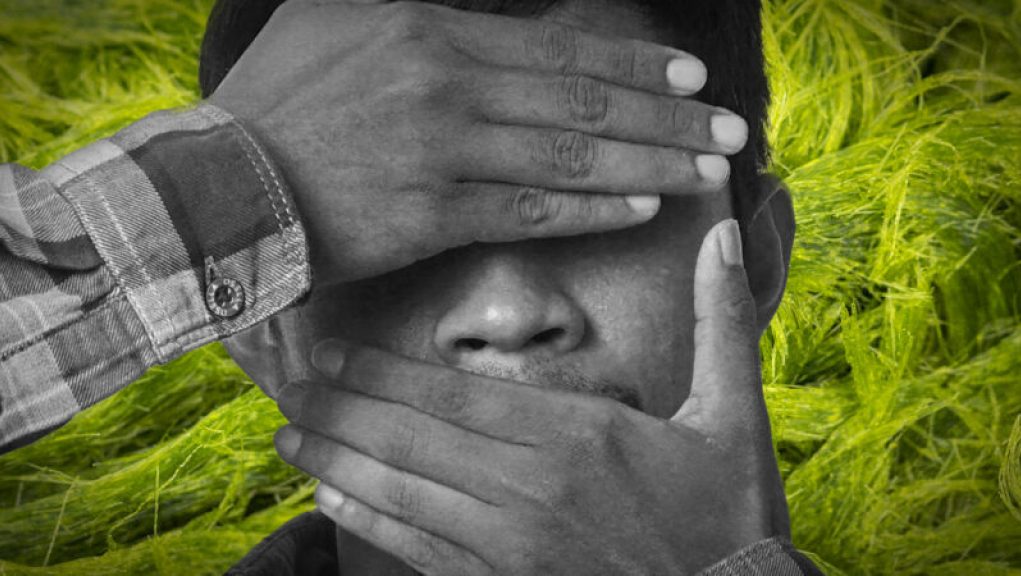Prepare yourself for a tale of medical oddities that will make your skin crawl. In Ohio, a man experienced a truly bizarre condition that, despite being harmless, is enough to give anyone nightmares. His recovery was swift and complete, but the sight of his tongue during his ordeal is enough to haunt even the bravest souls.
According to a report in the New England Journal of Medicine, the man’s tongue was covered in a thick carpet of green fibers. Yes, you read that correctly. A hairy tongue syndrome had transformed his once-normal tongue into a plush, green nightmare. While the most common version of this condition is black, it can also appear in various other colors, including brown, yellow, blue, and, in this man’s case, green.
Doctors initially misdiagnosed the condition as a yeast infection and prescribed antifungal medication. However, even after completing the course of drugs, the hairy growth remained. It wasn’t until he sought treatment at the Wright-Patterson Air Force Base medical center that he received a correct diagnosis of hairy tongue syndrome.
So, what causes this bizarre phenomenon? Despite being identified in 1557, doctors still don’t have a definitive answer. The prevailing theory is that some oral disturbances disrupt the normal shedding of cells on the tongue’s surface, leading to a buildup of debris that forms hair-like structures.
Tint and texture
The tongue is covered in tiny protrusions called papillae, with the filiform papillae being the most affected by hairy tongue syndrome. These papillae, which lack taste buds, are densely packed and create the tongue’s roughness. When defective desquamation occurs, these papillae can grow to lengths of 12 to 18 mm, trapping bacteria, fungi, and other debris. The colorful microorganisms and pigmented food residues contribute to the tongue’s unusual hue.
Advertisement
While the exact cause of hairy tongue syndrome remains unknown, certain patterns and associations have been observed. It primarily affects men and is linked to factors such as age, smoking, alcohol use, excessive coffee or black tea consumption, poor oral hygiene, certain cancers, and certain medications, particularly antibiotics. It is believed that a combination of oral irritations related to these factors triggers the condition.
Fortunately, the cure for hairy tongue syndrome is simple. It is generally a benign and self-limiting condition, with no specific treatment required. Reassurance, recommendations for oral care, and avoiding triggers like smoking are typically sufficient for the condition to resolve within a few weeks.
In the case of the Ohio man, he was a 64-year-old smoker who had recently completed a course of antibiotics for a periodontal infection. His doctors advised him to quit smoking and brush his tongue four times a day to aid in the shedding of cells. At a six-month follow-up, his tongue had returned to normal, despite his continued smoking habit.
A rare case of green hairy tongue sent shivers down the spines of the medical community recently, as a unique case came to light.
The patient, a 37-year-old man, had complained to his dentist of a persistent tongue infection for several weeks. Upon referral to a specialist, the dentist was shocked to find a fluffy green tongue.
Further examination revealed that the patient had developed a condition known as black hairy tongue (BHT), in which the tiny bumps on the tongue, known as papillae, grow out excessively and trap the bacteria living on the tongue. This causes a green coating to form over the tongue, and can lead to a bitter taste in the mouth.
Outbreaks of BHT have been reported in the past, but the green hairy tongue syndrome is a much rarer case. This is due to the green color being caused by bacilli, a type of bacteria which is found in fewer numbers and is far less common than other bacterial sources.
The unfortunate patient was immediately put on a round of antibiotics and a strict oral hygiene regime to keep the infection at bay. Although the bacteria is treatable, it is still essential to take preventative measures to avoid the condition in the future.
Good oral hygiene is the most important factor in preventing the bacteria from spreading, which includes brushing and flossing teeth regularly. It is also important to avoid activities such as smoking, eating sugary foods, and drinking alcohol to prevent the bacteria from multiplying.
The patient is now under the watch of medical staff, and reports that the infection has decreased dramatically. But the rare case of green hairy tongue sends shivers down the spines of the medical community, as it serves as a reminder to practice good oral hygiene. With more awareness, perhaps such cases can be avoided in the future.




















